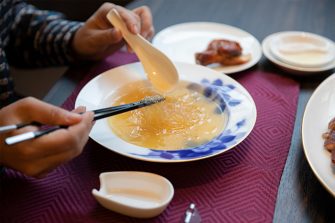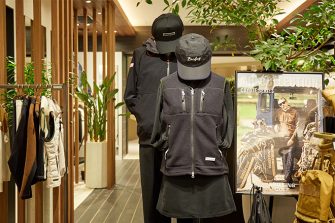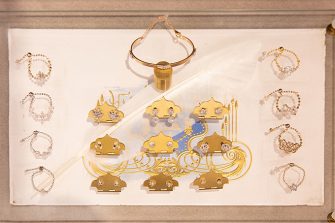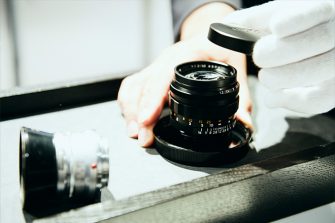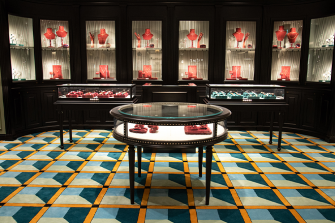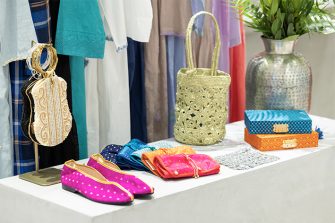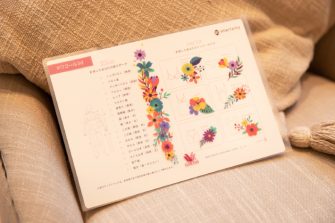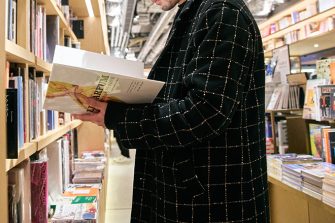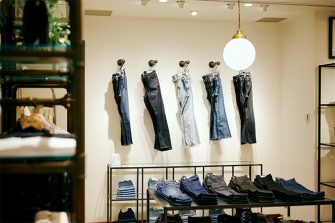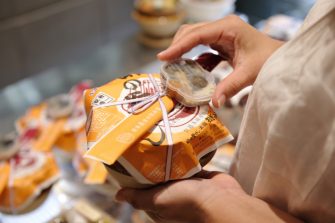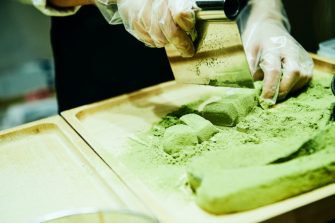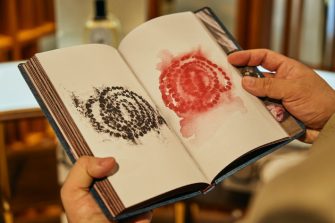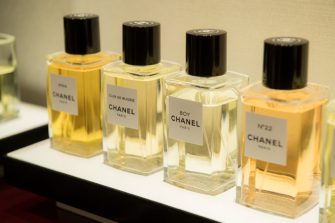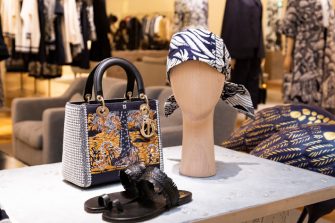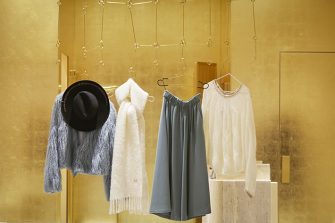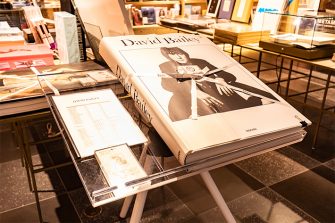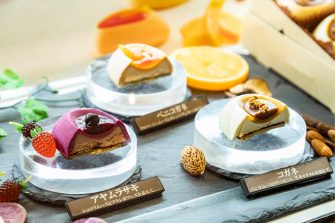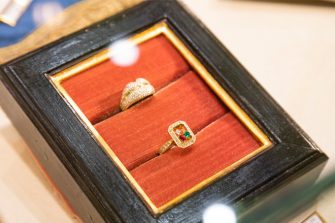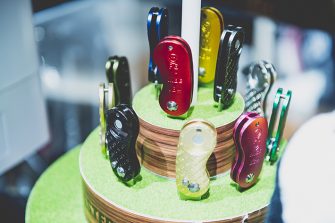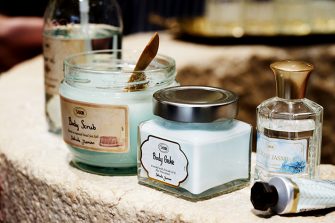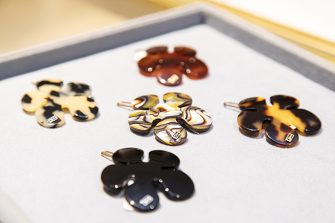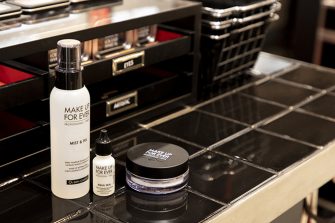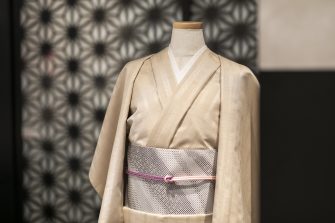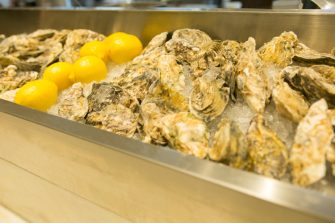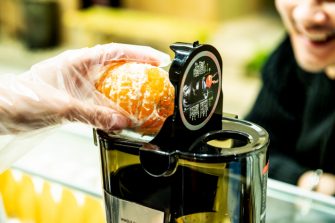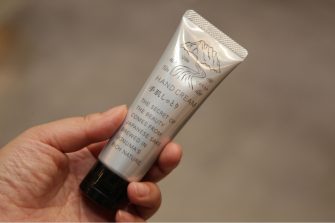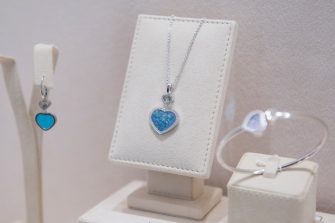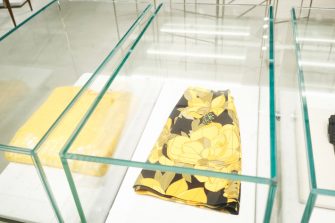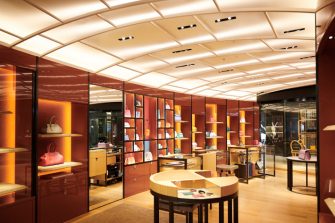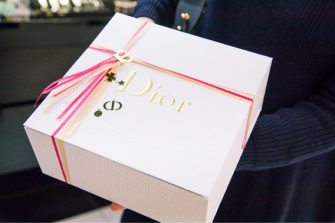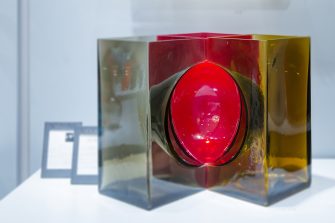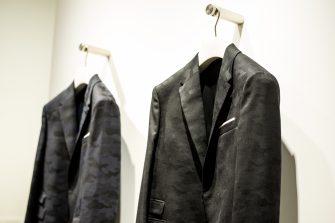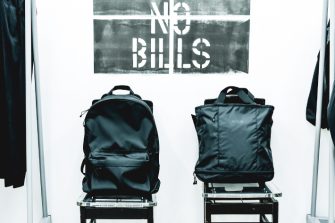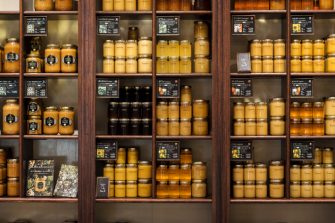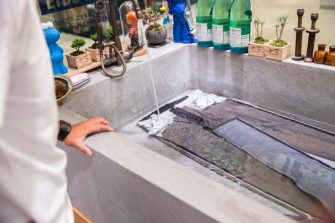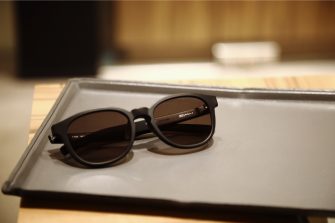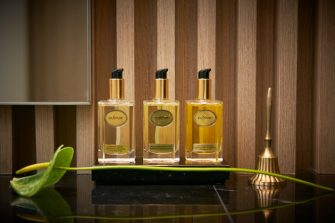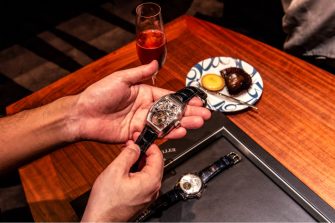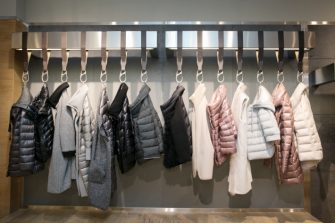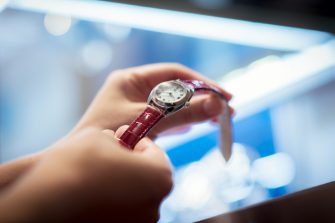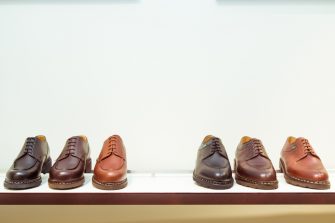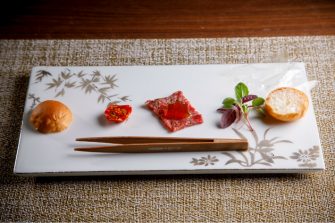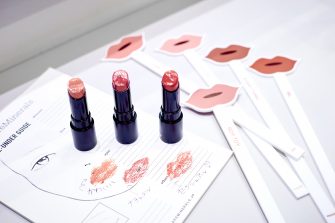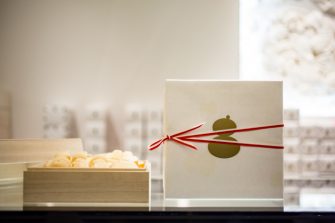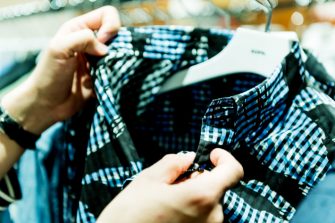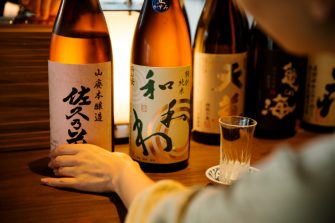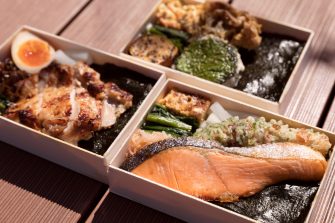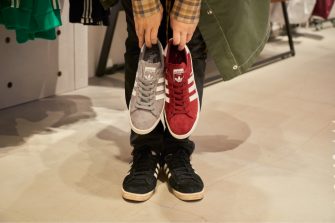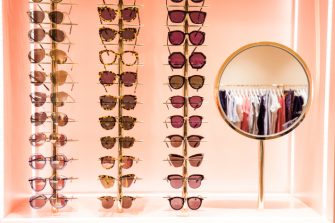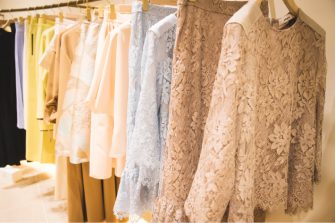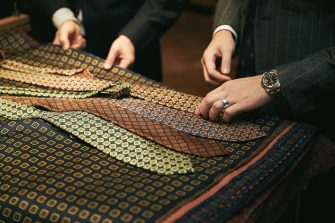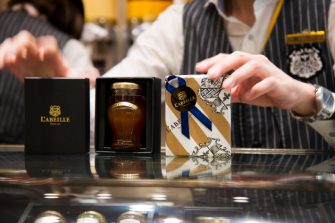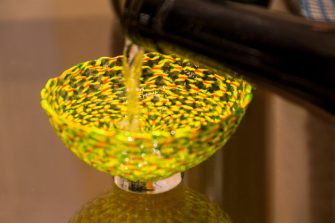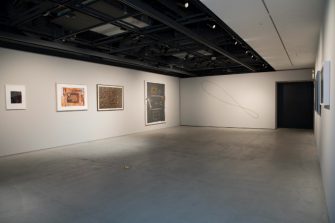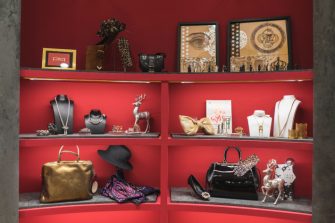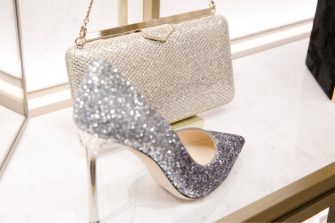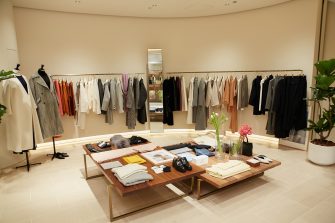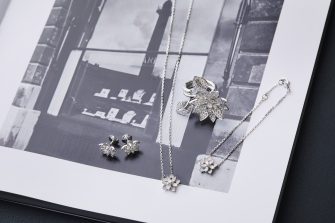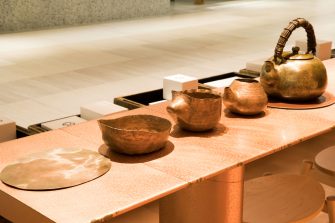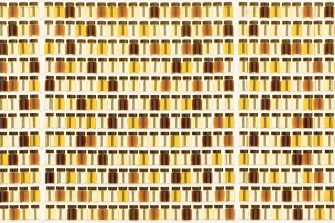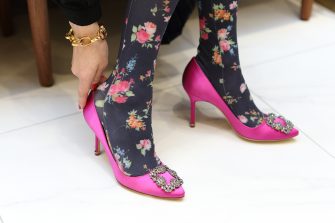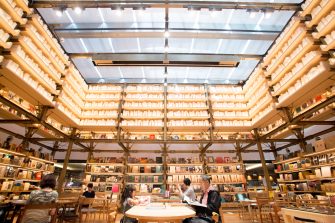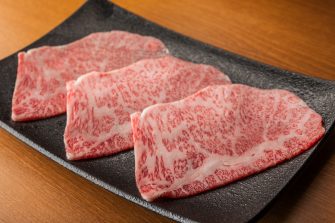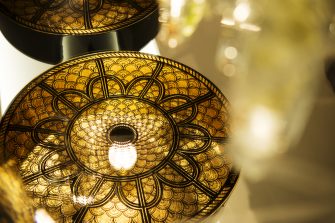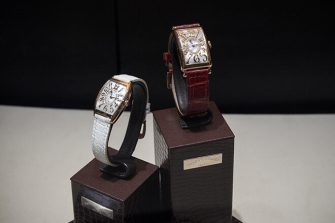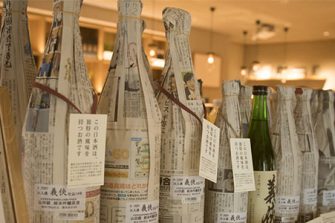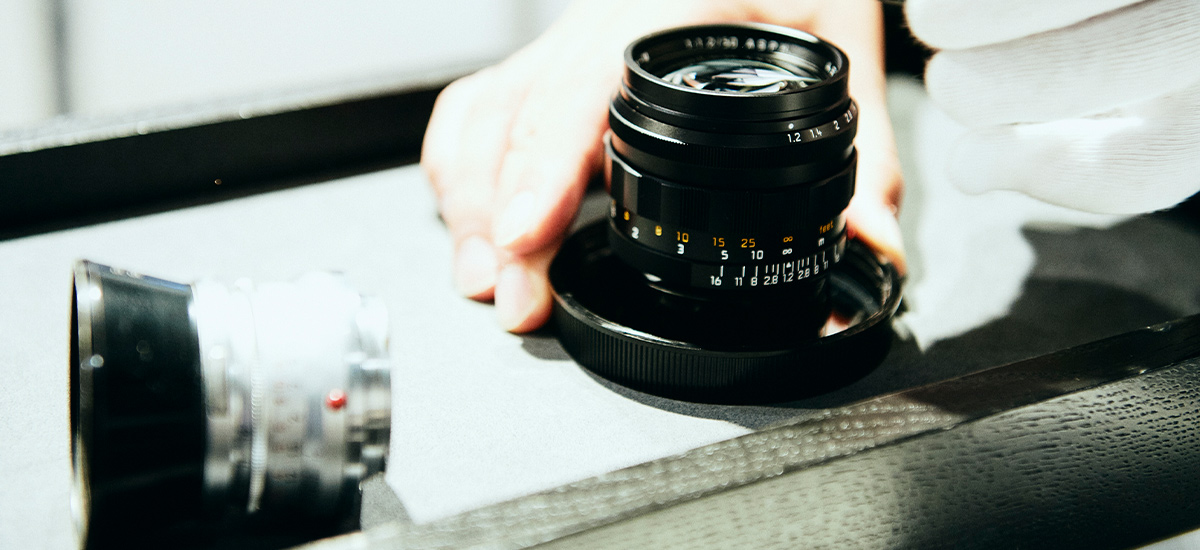

GINZA SIX EDITORS
时尚、珠宝&手表、生活方式、美容、食品…
精通各种类型的个性丰富的编辑们,在GINZA SIX上闲逛
记述走路发现的乐趣。
了解老字号“现在”之旅,In the GINZA SIX The “Right Now” of the Venerable Old Stores at GINZA SIX
山下英介 自由编辑
GINZA SIX EDITORS Vol.112
说到吃饭和购物,只有连锁店,是在没有味道的新兴住宅区长大的反义词吧。长大后的我,成为了一个在生活中追求历史、样式美、以及被证据的味道所追求的家伙,成为了一名男子。
对于这样的我来说,有着悠久历史的老字号鳞次栉比的银座是不可侵犯的存在。用“砖亭”的蛋包饭填饱肚子后,用“鲣鱼堂”和“三共照相机”找莱卡的旧镜头,走累了就去“咖啡店·德·兰布尔”休息一下……这就是理想的假日。三套西装,戴着中折断的帽子,一边夹杂着鼻子歌一边在林荫大道附近阔步前行的时候,沉浸在1920年代的“鼹鼠”的心情中,如果可能的话请一个人呆着。
但是,我绝对不是单纯的怀古主义者……我想。因为我的工作是时尚编辑。明治以后,银座是从全世界引进最先进且最高级的文物,不断进化的银座这条街道,也是最适合现场工作的城市。开场白变长了,要说我为什么要去“GINZA SIX”呢?我觉得这是因为这里最喜欢的老字号和历史悠久的品牌“现在”已经超越了种类的浓缩。
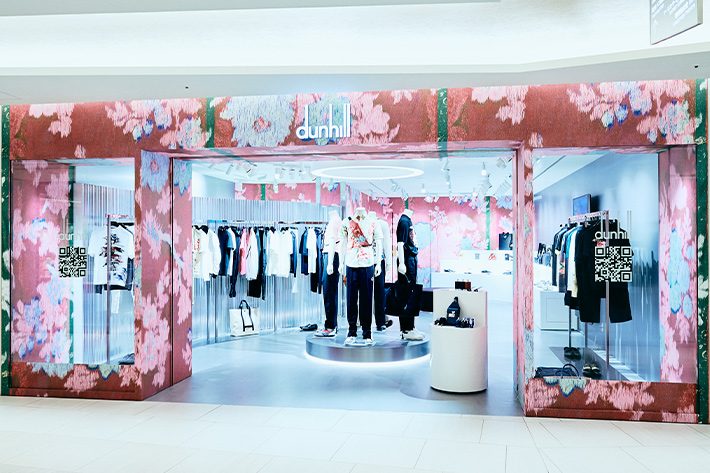
比如登喜路。1893年创立于英国,包括威士忌西装、驾驶商品等,是绅士所必需的各种物品,不言而喻的名门品牌。在日本银座中央大街设有酒吧、泰勒、酒吧、酒吧的总店,向我们日本人传达正宗的绅士风格。

但是,这里在“GINZA SIX”上开张的“登喜路GINZA概念商店”(2F)味道不同。那个商品的阵容,以至今为止在日本很难买到的最新的航道收藏品为中心。超大型的针织衫、工作裤、运动鞋等,颠覆了我们至今为止登喜路所抱有的印象,都是街头风味的休闲用品。
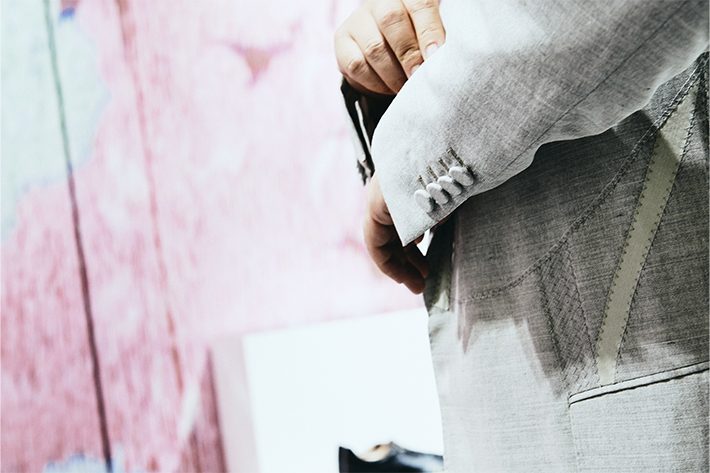
话虽如此,当然名门登喜路的风格依然存在。即使是乍一看很粗糙的泽西,其素材也是令人吃惊的优质,衬衫上印着的几何图案,是因为与品牌根源相关的古典汽车的涂饰剥落的质感而被启发出来的。作为业界屈指可数的服装狂热者而为人熟知的创意导演马克·威斯顿先生特有的深刻考察,一个一个地呼吸着。另外,优质的泰勒德服装内部使用的是复杂组合而成的芯材,但是大胆地将其作为夹克(330000日元※以下全部含税价格)的表地使用的话,也会让人感觉到确信犯的玩心。
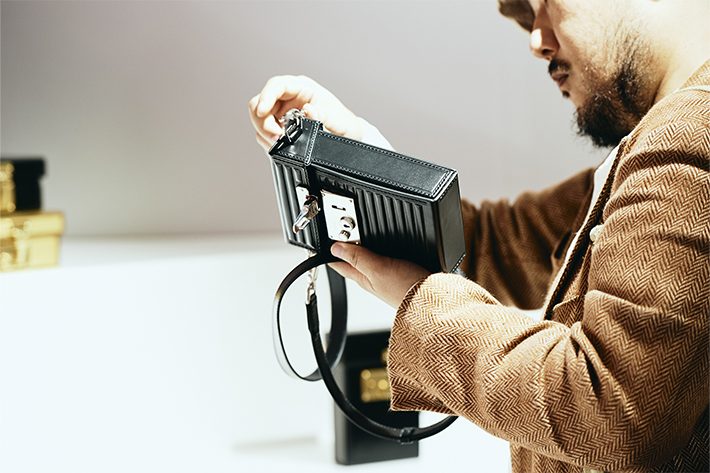
其中我个人比较在意的是,英国绅士御用的客套箱,竟然换成了现在尺寸的迷你挎包,叫做“摇滚包”的西罗物品(黑色推土机320100日元,金色金属573100日元)。可以说是古典音乐和现代的融合,这就是登喜路的新图标包。

这样的话,休闲装束也能轻松采用,但正因为是专业的工匠亲手制作的,所以制作得过剩的是超本格派! 从精致的盒子设计到黄铜金属零件,再到开闭时的“啪”的反应,完美地再现了真正的壁橱。老实说,价格不算川合,金属制品的重量感都不能把东西放进去,但是具备这种幽默感的男人才是现代的绅士。
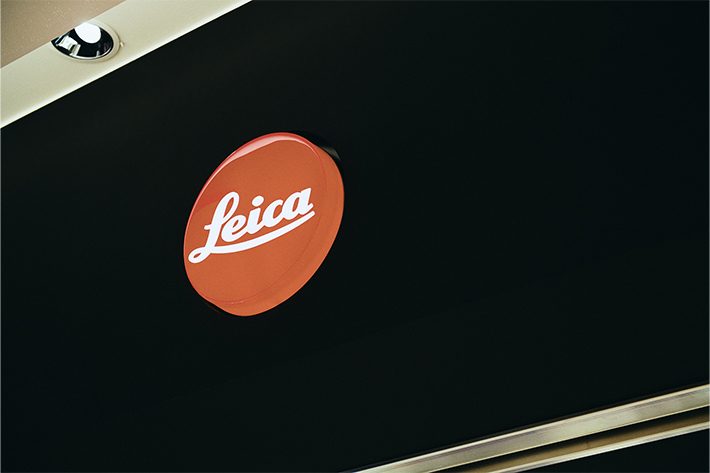
接下来的目的地是莱卡的直营店“Leica Store”(5F)。隐瞒什么,我是一个小小的莱卡爱好者。从胶卷机到最新的数码相机,作为编辑拥有差不多的收藏品,在工作中也经常使用。
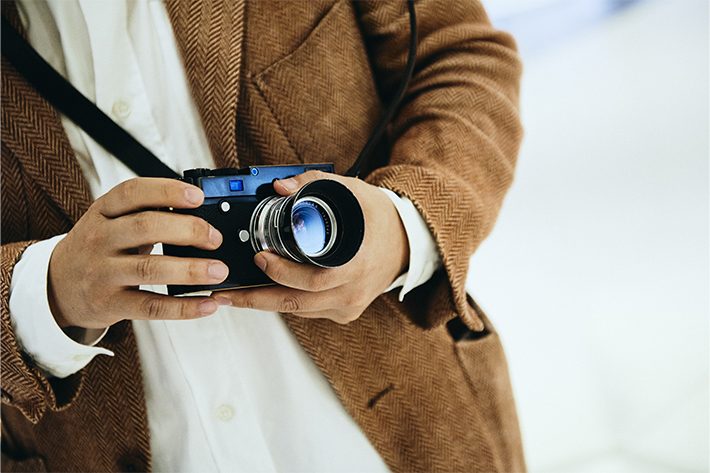
绅士们都知道,银座这个街道也是古典相机和莱卡的街道。照相机店如此密集,稀少且状态良好的镜头和照相机容易入手的区域,在世界范围内也是独一无二的。在日冕灾祸之前,因为外国游客而生意兴隆。
也许是因为当地的缘故吧,和“GINZA SIX”一样,在银座6丁目,有一家莱卡的直营店。在这里,在具备现行项目的全阵容的同时,完善了万全的修理体制,我也经常受到您的照顾。
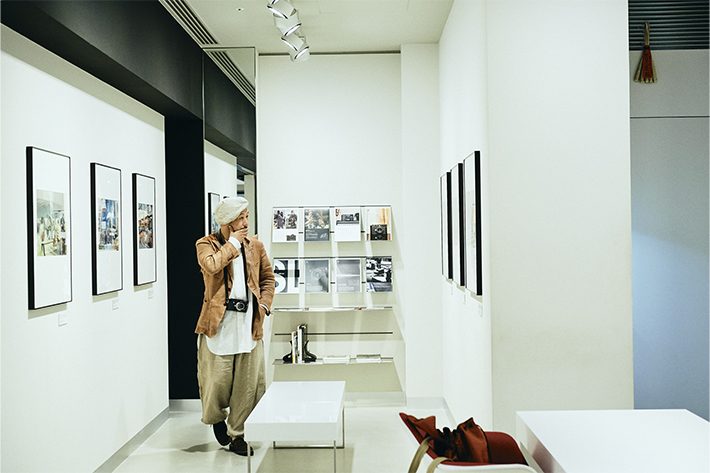
明明有直营店,为什么在眼睛和鼻子前面的“GINZA SIX”也建了Leica Store呢?没想到,这个使用起来很方便。因为没有固定休息日,而且营业时间比直营店长,所以工作结束后或者晚餐的时候顺便去一下。
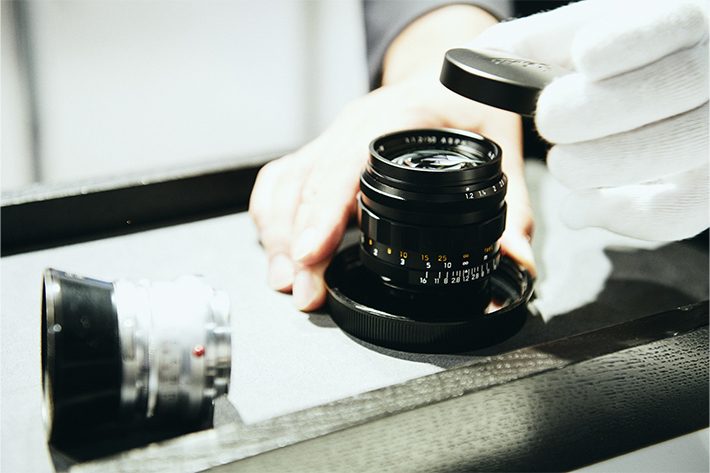
也许是因为宽敞开放的空间吧,平时容易客气的试拍,在这里也可以轻松地尝试一下。复刻了莱卡屈指可数的名作镜片的《诺克斯M f1.2/50mm ASPH.黑色》(990,000日元),以及我现在的主力机“莱卡SL2”的变焦镜头《巴里奥·艾尔马里特SL f2.8/24-70mm ASPH.》(352000日元)等,不断试映憧憬的高级镜头。
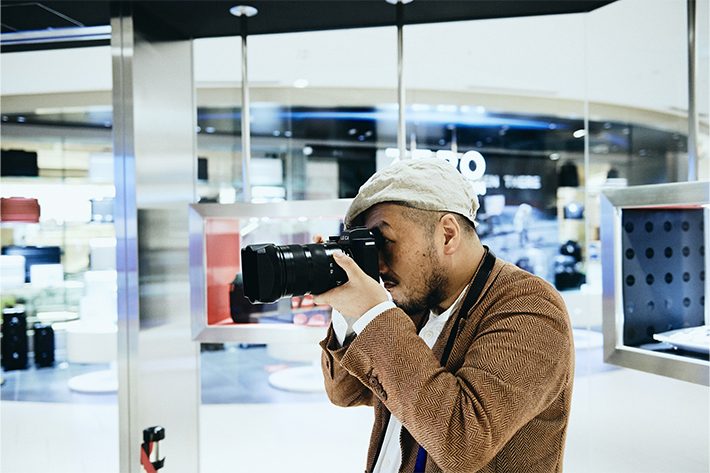
而且,最近很在意的莱卡第一台智能手机“LEITZ PHONE1”(187920日元※GINZA SIX店只试映试映不销售),也有了第一次拿到的机会。这种精致的造型自不必说,连拍照的情况也非常出色,作为编辑来说,“如果这样的照片充斥世间的话怎么办?”让人感到不安。我也得更上一层楼!
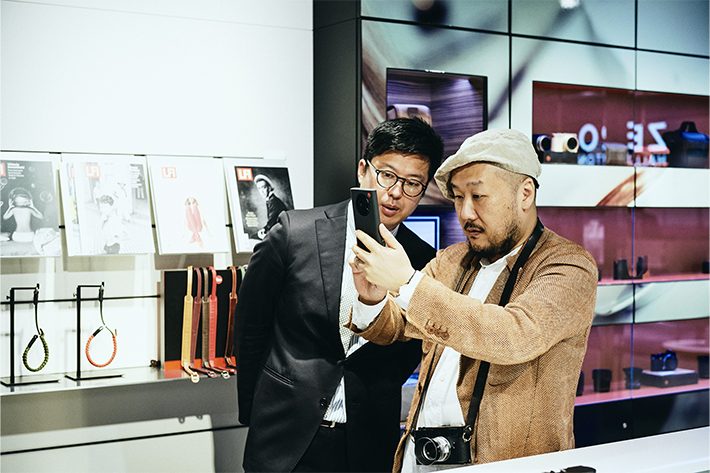
最近,在手表、牛仔裤、汽车、照相机等各个领域的复古人气很高,莱卡的老镜头也有惊人的高价。和现行的道具相比较,大多数情况下都会觉得“以前比较好”,但只有莱卡另当别论。过去的东西和现在的东西,各有不同的魅力,在这个数字时代也能很好地共存着。因此,作为粉丝们想要的东西满是想要的东西,非常困扰。…。
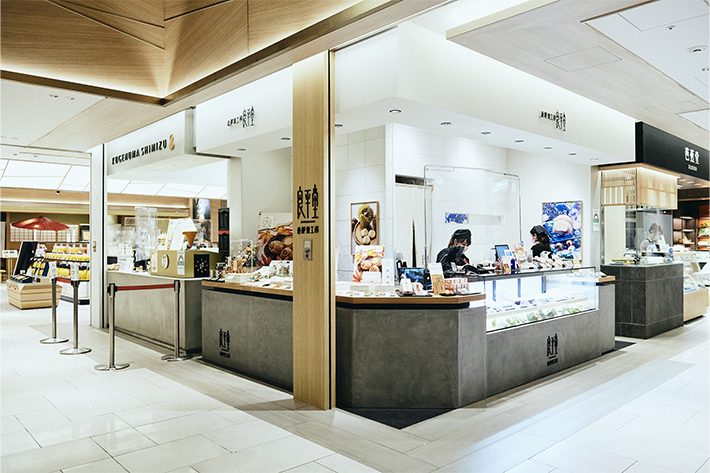
那么,为了寻求对试穿和试映疲劳有效的甜食,移动到了地下2层。这里有叶山的人气店玛罗、不言而喻的银座千只店等我喜欢的名店鳞次栉比。而且还有卖“GINZA SIX”限定甜点,所以不能疏忽大意。在这种情况下,突然映入眼帘的是位于岐阜县惠那市的老字号和点心店“惠那栗工房良平堂”的招牌。
其实正好去年秋天,因为工作有机会在中山路上旅行,那时偶然顺道来到这里,用新栗子做的栗子金团的可爱形象和在东京吃的完全不同,丰富而复杂的味道让人吃惊。出生以来第一次亲身感受到的,象征木曾~美浓地区“山文化”的名店里,有分店!

今天在爽朗的名产工作人员加藤先生的推荐下,买了几种甜点,比如在柿饼中加入栗子金团的原创绝品“栗福柿”(1个300日元~)等。无论哪一种都是利用栗子的自然甜味的风味,即使讨厌和式点心的人也一定能吃到美味。虽然我不太强,但是可以配合单人马尔特。
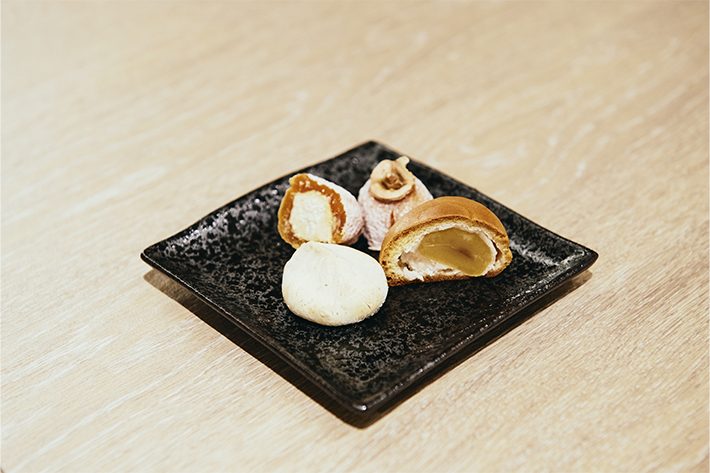
1893年创业的登喜路,1914年创业的莱卡,还有1946年创业的良平堂。虽然种类完全不同,但是今天到访的3个老字号品牌的共同点是,不安于历史,勇敢地挑战新商品和服务的积极精神。正因为如此不断进化,才有了现在的地位吧。
虽然是很辛苦的时期,但是我也要向前努力吧! 重新下定决心,顺便买一个莱卡镜片回去吗?…。诶,那样鲁莽的购物会被妻子骂? 不,那个不用担心。因为今天的特产是她最喜欢的良平堂的栗子金团。
Text:Eisuke Yamashita Photo:Yuichi Sugita Edit:Yuka Okada(81)
Maybe it’s a reaction to having been raised in a drab cookie-cutter housing development with nothing but chain stores and restaurants as shopping and dining options. But since becoming an adult, I’ve become difficult—in every aspect of my life I only want things with solid and authentic roots in history, in tradition, in formal beauty.
For me, Ginza, its streets lined with dignified shops boasting long, venerable histories, must never be infringed upon. I partake of a rice omelet at Rengatei or look for an old Leitz lens at Katsumido or Sankyo Camera. When I tire of walking, I take a break at Café de l’Ambre—the perfect day off. Striding down the Namiki-dori Street in my three-piece suit and fedora humming a tune, I’m in full-on modern boy mode, straight out of the 1920s. You’re advised to leave me be.
But for all that, I don’t think I’m simply stuck in the past. I’m no Luddite. That’s because I work as a fashion editor. Ginza has evolved constantly since the Meiji era by introducing the most avant-garde and most luxurious goods from around the world. There’s no better place for fashion fieldwork.
With my lengthy preamble concluded, I’ll tell you why I regularly visit GINZA SIX. It’s because the “right now” of the venerable shops and brands redolent of history that I love are all here in their admirable variety.

Dunhill, for example. It’s a famous brand—you don’t need me to tell you this—founded in England in 1893. It carries all the things that make a man a gentleman, bespoke suits and driving attire and goods among them. The Japan flagship on Chuo-dori Avenue provides a barber, a tailor, and a bar, giving us here in Japan true insight into the traditions and styles of the gentleman.

However, the Dunhill that opened in GINZA SIX, the Dunhill Ginza Six Concept Store on the second floor, is a bit different. The product lineup is primarily the latest runway collection, which had been difficult to locate in Japan. Oversized knits, work pants, sneakers and more—almost all streetwise casualwear, transforming our traditional conception of the brand.

Having said this though, the prestigious Dunhill we all know and love is very much present. A rough-looking jersey fabric—at first glance, at any rate—is of astonishingly high quality. A geometric print on a shirt is inspired by the look and textures of a classic automobile (part of the brand’s roots) with some paint stripped off. Every detail speaks eloquently to the imagination and meticulous working methods of the brand’s creative director, Mark Weston, known, even in the industry, as a premier fashion maven.
Luxury tailored clothing typically makes use of a complex combination of interlining on the inside. But this jacket (330,000 yen; all prices listed after tax) makes bold use of this as the outer material—a flagrant playfulness!

Personally, I really like what they call the Lock Bag (black padded leather: 320,100 yen; gold metal: 573,100 yen), a traditional British attaché case reinvented as a mini-shoulder bag. A true fusion of classic and modern, I’m told it’s the brand’s newest iconic bag.

The Lock Bag would pair quite naturally with casual attire, but because it’s handmade by dedicated craftspeople, the construction is authentic to the last degree. From the elaborate case design to the brass fittings to the satisfying solidity of the clasp when it opens and closes, it perfectly reproduces an authentic attaché case. On the downside, the price verges on the horrifying, and the metal version is so thick and heavy one could barely fit anything inside—but one imagines today’s gentlemen have just the sense of humor required to take this in stride. Or even seek it out.

With the Lock Bag slowing my will to move on, I head to my next spot: the Leica Store on the fifth floor, which is directly managed by Leica. I have to admit I’m a bit of a Leica enthusiast. As an editor, I have a decent collection of cameras, from film to the latest in digital. I use them often in my work.

As my gentlemen brethren know well, Ginza is the district for classic cameras and Leica. There’s a cluster of camera stores. In no other area in the world is it easier to find a rare lens or camera in good condition. This place bustled with foreign tourists before the pandemic.
No doubt this is why Leica opened its very first directly managed store anywhere in the world in Ginza 6-chome, the same district as where GINZA SIX is located. The store carries the company’s full lineup of current products and a full slate of repair services. I’m a regular customer myself.

I do have to wonder—why another Leica Store so close by at GINZA SIX? Whatever the reason, it’s certainly convenient—open seven days a week and for longer hours than the Ginza 6-chome store, which lets me stop by casually after work or on the way to dinner.

Maybe because the store is so open and spacious, I feel freer than I normally do to test out the cameras by taking a bunch of shots. I try a number of the high-end lenses I’ve yearned for, including the Noctilux-M 50mm f/1.2 ASPH (Black) (990,000 yen), a reproduction of one of Leica’s preeminent masterpieces, and the Vario-Elmarit-SL 24-70mm f/2.8 ASPH (352,000 yen), a zoom lens I want to put on my Leica SL2, my current mainstay.

I was lucky enough today, too, to hold in my hand Leica’s first smartphone, the Leitz Phone 1 (187,920 yen. Note that you can try it at the GINZA SIX store, but it’s not for sale). The construction is exquisite—which goes without saying—but the photos have that same splendid Leica look as well. As an editor, I almost start to worry about what will happen when everyone is able to take photos this good. The prospect’s a good push forward to achieve the next step up in skills.

Vintage has been really hot recently in various areas—watches, jeans, cars, cameras. Classic Leica lenses are fetching unbelievably high prices. In most cases, comparing vintage gear to the stuff today, you end up thinking the old stuff is better. Not so with Leica. The old and the new have their respective appeal. Both exist in perfect harmony, even in this digital age. Which is why, as a fan, there’s so much I end up wanting—which can be a problem.。

Feeling a little weary after trying on many clothes and taking many photos, I head to the second belowground floor for a sweet pick-me-up. So many famous restaurants I love! The popular Marlowe of Hayama and the renowned Ginza Senbikiya. What’s more, they sell sweets here available only at GINZA SIX. There’s no letting your guard down. Scanning the sights, my eyes alight on the sign for Ena Kurikobo Ryoheido, a long-established confectionary store based in Ena, Gifu Prefecture.
Just this past fall, I had the opportunity to travel the famous Nakasendo region for work. I stopped by the store by chance. I was taken by the winsome kurikinton chestnut paste, made from the latest crop, and surprised by the rich, complex flavor—totally different from the ones I’d had in Tokyo. This was my first experience with the famed mountain culture of the Kiso-Mino area, as represented so well by this great store. Who knew there was a branch here!

On the recommendation of the cheerful clerk, the renowned Mr. Kato, I buy several varieties of sweets, including the store’s unique specialty, Kurifukukaki (from 300 yen and up each), comprising a dried persimmon with chestnut paste inside. All these flavors draw on the natural sweetness of chestnuts, so I have no doubt that even those who don’t like Japanese sweets will find them simply delicious. I’m not much of a drinker, but they’d certainly be ideal companions for a single malt whisky.

Dunhill was founded in 1893, Leica in 1914, and Ryoheido in 1946. Though completely different types of stores, the three venerable institutions I visited today share a forward-looking spirit quick to take up the challenge of offering new products and services, rather than resting on their laurels. That they have continued to evolve is one of the reasons for their lofty status today.
We’re living through some tough times right now. But I, for one, plan to look ahead and do my best! Having made this new resolution, maybe I’ll go back and buy just one new Leitz lens. You say such an impulsive purchase would disturb my spouse? Nope, no worries. I got her something, too: the sweet chestnuts she loves from Ryoheido.
Text:Eisuke Yamashita Photo:Yuichi Sugita Edit:Yuka Okada(81)
山下英介
1976年出生于埼玉县。《LEON》、《MEN’S EX》等,从2000年代前半期开始着手编辑各种男性时尚&生活方式杂志。2009年开始参与《MEN’S Precious》的创刊,到2020年秋季为止担任创意导演。兴趣是照相机和海外旅行。从英国到印度,我们采访了世界各国的古典风格和制作现场。现在在周刊文春、文艺春秋等地亲自参与时尚网页的同时,还计划于2021年秋天贷款新的在线媒体。
Instagram: @eisuke_yamashita


